/about/GettyImages-184988903-56e20b6a3df78c5ba056b76b.jpg)
Of all the odors that can get ground into the upholstery and carpet in a car, smoke from cigars and cigarettes can be the toughest to get rid of. The smell usually doesn’t bother smokers who are still in the habit of lighting up, but it can quickly become a nuisance to smokers who are in the process of quitting and any new owner of a used car that is still haunted by the specter of smokers past. The easiest way to remove a lingering smoke smell from a car is to take it to a professional, but it’s also possible to do at home if you’re willing to get your hands dirty and work with some technology that you might not otherwise come into contact with.
Preparing a Car to Remove Lingering Smoke Smells
Whether you’ve recently kicked the habit, or you’ve suddenly found yourself with the keys to a car that used to be owned by a smoker, the first step in getting rid of the lingering smoke smell is to clean the interior. If there are any butts or ashes still in the car, either tucked away in ashtrays or littering the floor, those have to be the first to go. The only way to remove smoke smells from a car once and for all is to start with a clean slate.
Smoke odors can penetrate and burrow into any porous surface, so cleaning the car out doesn’t stop with removing old butts and ashes. The next step is to clean out any belongings or other stuff that’s sitting around on the floor or seats of the car so that you can vacuum everything. Vacuuming the carpet and upholstery can help draw out lingering odors, but that may not be enough.
Removing Smoke Smells From Car Upholstery and Carpet
Vacuuming is a good start, but sometimes you will have to go one step further to neutralize smoke odors that have soaked into the upholstery and carpet.
There are upholstery and carpet cleaning products out there that are specifically designed for this purpose, but baking soda can help neutralize these odors as well, according to Consumer Reports.
Removing smoke smells from a car with baking soda is a multi-step process:
- Clean and vacuum the seats and floor of the car.
- Make sure that the seats and floor of the car are totally dry.
- Sprinkle baking soda on the upholstery and carpet.
- Leave the baking soda on the upholstery and carpet for several minutes.
- Vacuum up the baking soda.
Baking soda absorbs offensive odors like smoke, which is why some people leave an open box in their refrigerators. Leaving an open box in your car can have the same effect, if sprinkling it on the carpet and vacuuming it up doesn’t do the trick right away.
Cleaning Smoke Residue From Other Car Interior Surfaces
Cigarette smoke has a habit of seeping into porous surfaces like upholstery and carpeting, but it doesn’t end there. Smoking also tends to leave an oily residue on other surfaces, which can contribute to a lingering smoke smell even if you vacuum and use absorbent materials like baking soda and activated charcoal.
The main surfaces to worry about in terms of cleaning up the oily residue from smoking are the windows and the dashboard, but it won’t hurt to give every surface in the car a good, thorough scrubbing. Water typically won’t cut it, literally, but a good, foaming window cleaner will often do the trick on the windows, dashboard, and other surfaces where oily smoke residues build up.
Of course, before you apply any cleaning agent to any surface inside your car, it’s important to read the warning label and ingredients to make sure that’s safe to use on glass, vinyl, plastic, or whatever the surface is made from.
Smoke residue can also get caught in your vehicle’s cabin air filter, so it’s a good idea to swap that out as well. If you leave the cabin air filter in place, you may end up just recontaminating the air inside your vehicle whenever you drive it.
Absorbing Smoke Smells in Cars Versus Covering Them Up
Baking soda works to absorb bad smells, as opposed to air fresheners that simply cover up bad car smells.
In addition to baking soda, there are a number of other substances that you can leave in your car, tucked away under the seats, that can absorb bad odors over time. Activated charcoal, white vinegar, coffee grounds, and a variety of commercial products can all be used to soak up offensive smells like smoke.
The idea is that by leaving a bowl of white vinegar, coffee grounds, or sachets of activated charcoal in your car overnight—or even longer term—they will absorb some or all of the smoke. When you remove the absorbent and dispose of it, you’re also removing whatever bad smells that it soaked up while it was in the car.
Products like Febreze are similar in that they are designed to remove, or alter, the molecules behind smelly odors rather than just masking them. Febreze in particular utilizes a that traps odor molecules. The smelly molecules are still there after you spray the Febreze, but they can no longer bind to your scent receptors, so you can’t smell them anymore.
According to Consumer Reports, products like Febreze may not be as effective as advertising might lead you to believe, but their testing involved spraying the product in a room that still contained the source of the bad odor. So while the Febreze may have neutralized some malodorous molecules in the room, the source was still there to emit yet more stink. So by first removing the source of the smell, by cleaning out ash trays, vacuuming, and cleaning windows and other surfaces, a product like Febreze is more likely to work.
Removing Smoke Smells From Cars With Ozone Generators
In some cases, you can vacuum and use odor-absorbing products as much as you like, and a nasty smoke smell will continue to linger. This is where ozone generating technology comes into play. Professional automotive cleaners and detailers often use ozone generators to knock out stubborn smells, so you have the choice of either taking your car to one of these professionals or renting an ozone generator and doing the job yourself.
It’s important to note that ozone generators aren’t the same as air purifiers or ionizers. Car air filters and purifiers can filter out some bad smells, if the molecules are big enough and the filter medium is fine enough, but ozone generators are on a totally different level than plug-in ionizers.
The way that ozone generators work is by using coronal discharge or ultraviolet radiation to break normal O2 molecules down into single oxygen atoms. These single oxygen atoms then bind to O2 molecules, creating O3, or ozone.
Ozone is inherently unstable, in that the extra oxygen atom tends to break off and bind to other molecules. When this happens, the ozone molecule turns back into regular O2, and the other substance is altered by having an additional oxygen atom attached to it. This can effectively neutralize bad odors when the oxygen atoms bind to the molecules of smelly substances like smoke and alter the chemical structure.
Although ozone can be effective at knocking out tough odors like smoke, it can also be hazardous to your health. This is why ozone generators are usually used in unoccupied areas and turned off before the area is used again.
The general process of using an ozone generator to remove smoke smells from a car is:
- Clean the interior of the vehicle and remove any sources of bad odors.
- Place the ozone generator in the vehicle or connect a hose to the generator and route it into the vehicle.
- Run the ozone generator to fill the interior volume of the car with ozone.
- Several times during the course of the ozone treatment, run the vehicle’s HVAC fan on recirculate to ensure that ozone passes through the ductwork and heater box.
- Air out the vehicle before driving it, then drive it with the windows down, wipe down surfaces, and vacuum to remove any residual ozone smell.
Since ozone can be hazardous to your health, it’s important to minimize your exposure when working with an ozone generator. With that in mind, it’s a bad idea to do this type of job while the vehicle is in a confined space like a garage, and you’ll want to avoid breathing in too much O3 both during and after the job.
From Lifewire
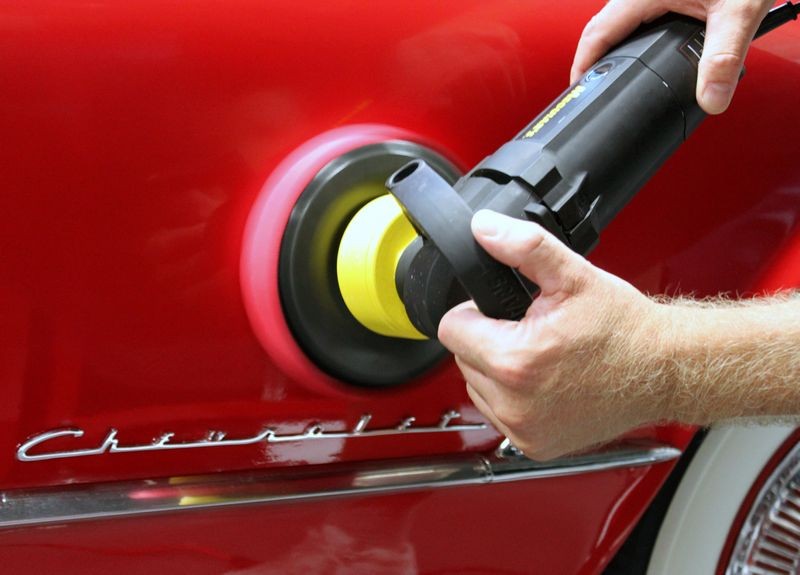 he answer is: Probably. Waxing has always made cars extra shiny. That’s still the case today, but both modern paint jobs and wax formulations have improved a lot in recent years. Paint used to be just thatpaint. A new car got a layer of primer and a few coats of colored lacquer, and that was it. Wax not only gave the paint a good gloss, it was also the only line of defense against scratches.
he answer is: Probably. Waxing has always made cars extra shiny. That’s still the case today, but both modern paint jobs and wax formulations have improved a lot in recent years. Paint used to be just thatpaint. A new car got a layer of primer and a few coats of colored lacquer, and that was it. Wax not only gave the paint a good gloss, it was also the only line of defense against scratches.
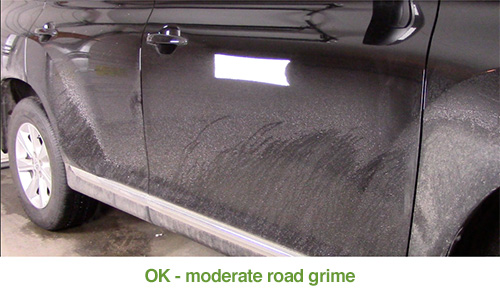
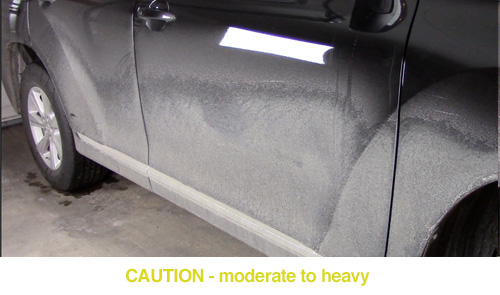








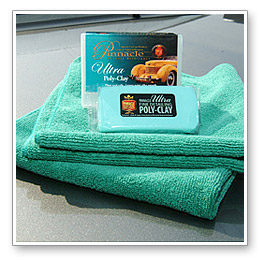 Auto Detailing Clay Bar is an engineered resin compound used to remove contaminants from the surface of your car’s paint, glass, fiberglass and metal. Detailing clay can be natural or synthetic, though most manufacturers utilize synthetic clays.
Auto Detailing Clay Bar is an engineered resin compound used to remove contaminants from the surface of your car’s paint, glass, fiberglass and metal. Detailing clay can be natural or synthetic, though most manufacturers utilize synthetic clays.
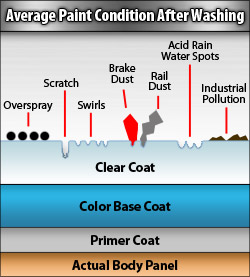
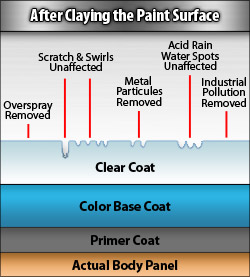
/about/GettyImages-184988903-56e20b6a3df78c5ba056b76b.jpg)